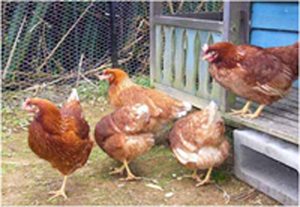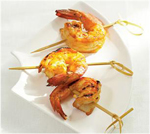Work Package 2: Agri-exports from Brazil
This work package will examine the growing export economies of agri-food producers in the Global South such as Brazil, focusing on the poultry and aquaculture sectors.

Brazil is amongst a number of countries located in the Global South whose economies are dominated by agricultural export commodities. Characterized by rapid and large scale agri-industrialization beginning in the 1970´s Brazil is fast becoming one of the world´s largest agricultural producers. Basing this development initially in primary commodities, such as soybeans, a crop used mainly for the production of animal feed, Brazil´s agricultural industry is rapidly shifting into the production of primary as well as secondary and tertiary products. As a result of this agricultural transformation, Brazil has emerged as a leading producer aviculture and aquaculture.
Soybeans have long been a mainstay of Brazil´s export economy where it is produced for export into consuming countries such as the US and China before being processed into high(er) value products such as animal feed. The 1990s saw a rapid increase in the price of soybeans due to fluctuations of other `global´ commodities, which was in turn followed by a rapid conversion of land dedicated to soybean production, land in the case of Brazil located primarily within the southern Amazon basin. Though this has moderated to some degree, the development of this form of agriculture came with a social and ecological price visible in the widespread conversion of tropical forests and grasslands into agricultural lands along with the displacement of indigenous peoples. A discourse, which has been problematized by other scholars, has subsequently emerged about the destruction of the rainforest at the hands of big business and much attention has been spent on the conservation and preservation of tropical forests. This narrative of `rainforest destruction´, however problematic and disputed, has led tangible shifts in agricultural practice and, importantly, agricultural policy. More attention is being spent on regulating production systems in sensitive environments as well as on `value-added´ primary products, such as animal feed. Increasingly, value-added secondary products such as chickens and more recently prawns have furthered this transformation. Brazil´s agricultural sector can now be characterized by the national integration of its industries and by a new-found attention to sustainable and other wise green production agendas. Materially, this means that Brazil is now one of world´s leading producers of broiler chickens, most of which are destined for export to the Middle East, but increasingly to the United Kingdom. Likewise, Brazil is emerging as a major exporter of prawns that like chickens are increasingly found in the UK.
While the links between chicken and prawn production can be drawn through an agri-industrial complex centred on Brazil´s soybean industry, the links between the two within the context of consumption are bit more `cultural´. The ubiquitous curry in the UK is increasingly recognized as part of the national cuisine with Chicken Tikka Massala emerging as the `national dish´. Prawns too are typically found alongside chicken on the pages of curry restaurant menus as well as in ready-prepared meals. This connection, at least on the surface of the restaurant has little if anything to do with links at production. Each product has different geographic imaginaries that are variously produced and performed as part of the wider cultural geographies of curry, and these geographies are by no means straight forward. Narratives of authenticity appear at the curry house to evoke a sense of geographical imagination about the cultural links between a restaurant and its cuisine and its supposed origins in Southern Asia. This narrative may go so far as to suggest the steps to which restaurateurs go to ensure that their product, in this case a dining experience, maintains a sense of their Southern Asian origins. Cooks are often imported along-side recipes, dishes, spices, and other elements to produce some notion of an authentic cuisine. These ideas present their own problematic notions culture, cuisine and authenticity. Yet despite a growing awareness of these awkward configurations, understandings about the materialities of the products in question are largely missing – how does a chicken or a prawn make it onto the plate of a restaurant anyway? Chickens and prawns, which form a vital component to a dish, are quite often left out of the stories and geographical discourses about where the dish comes from.
Bracketing these two competing materialities of chickens and prawns, one that focuses on places of production and the other on places (and imaginations) of consumption is a regulatory climate predicated upon notions of food risk and anxiety. Risk and anxiety about food stem from a variety of social, cultural, and scientific understandings about the best ways to produce food. This awareness and understanding have largely emerged from food scares where the safety and well as the ethics of the food system have been questioned. Following recent food scares, for instance, British consumers and retailers place a premium on traceability, and food produced locally has become an important idea least of all because its supply chains seem to be relatively apparent. Circulating within these ideas of transparent localism are more intangible issues such as British consumers´ attitudes towards `foreign´ foods. While there is some evidence that imported food is less safe than British food, with 80% of food safety alerts in the UK attributed to imported food in 2006 (Cabinet Office 2008) most recent food scares have been centred on British agricultural products and practices. These issues however are prefaced by the form that these products take as they appear to consumers. Our recent work with British retailers suggests that consumers hold different attitudes towards fresh chicken (whole birds and portions), where British poultry is preferred, than they do to frozen and processed chicken (in sandwiches and ready-meals, for example) where imported chicken is more acceptable. In the case of ready-meals and other prepared food items, such as chicken tikka masala, the `authenticity´ of the recipe is generally more important than the geographical origin of the ingredients.
Using chickens and prawns from Brazil, this work package is about connections within the global agricultural system. On the production side, the links between chickens and prawns can be investigated through the lens of soybeans and large-scale political-economic interactions, whilst on the consumption side, the links between chickens and prawns can be found in the ubiquitous (to the UK) curry house. In the middle lies the regulatory system that balances the tensions between production and consumption. However, what happens between these different spaces, between production, regulation and consumption remains to be seen.
Methods:
This work package seeks to bring together these different spaces of food by following the geographies of chickens and prawns, from their places of consumption, like the curry house, through their regulatory regimes, their places of import and export and finally to where they are produced. In the process, this will document the growth of chicken and shrimp imports from abroad (using data from FAOSTAT and other sources) and tie it together with field-based research in Brazil and the UK. It will interrogate the places where these foods are variously packaged and processed as well as the places where their regulation occurs. Likewise, it will examine British consumers´ attitudes towards imported food including the impact of recent `food scares´ (using newspaper archives and others sources including interviews with officials at the Food Standards Agency and the Department for the Environment, Food and Rural Affairs) through interviews that will explore consumer attitudes towards imported poultry and fish and the places and contexts where they might be found.
